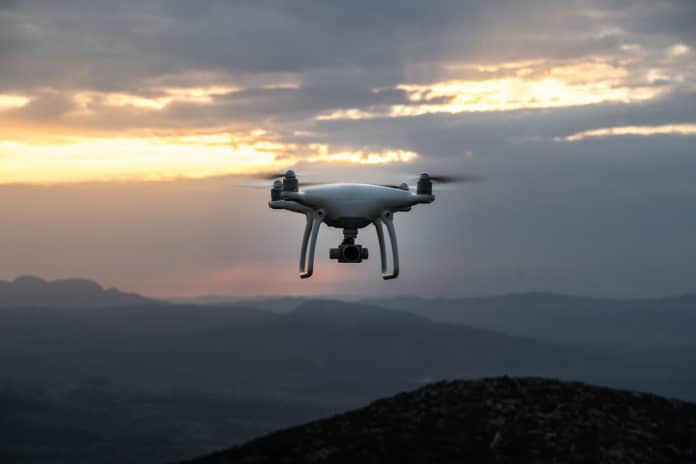Physical Geographer Dr. Amy Woodget, of the School of Social Science at Loughborough University, is developing drone technology to measure the size of small, underwater sediments in a bid to understand how rivers are responding to environmental drivers such as climate change.
Woodget is developing this technology using drone imagery and machine learning. She is also hoping that the technology will allow sediments as small as 0.5cm to be measured accurately. This will provide some valuable scientific data that will reveal how rivers are behaving.
Monitoring how river habitat sediment (matter that settles at the bottom of the water) is changing is important for several reasons. Sediments play a key role in elemental cycling in the aquatic environment. They are responsible for transporting a significant proportion of many nutrients and contaminants. They also mediate their uptake, storage, release, and transfer between environmental compartments.
Various sediment sizes have different and drastic effects on rivers. By studying these different patterns of sediment size, experts can understand changes that are occurring in rivers as a result of environmental factors. These patterns can also reveal how the shape and size of river channels are changing. It means the amount of water a channel can hold can be calculated and then experts can assess how susceptible a river is to flooding.
Sediment sizes are also important for the ecologists as it gives an indication of what kind of habitats are available in the river.
Read more: Flybotix’s new duel-propeller drone flies twice as long as conventional models
Dr. Woodget says, “drones allow environments to be studied in much more detail than previously possible and this is likely to become very important for helping make the right decisions to manage environments effectively.”
She explained, “This research project aims to measure the size of underwater river sediments using a novel technological approach using drone imagery and machine learning.
“We need to know how to accurately measure underwater sediment sizes in fine detail in order to improve our understanding of how rivers and their resident animal and plant life are changing and responding to big environmental drivers like climate change.
Read more: UDrone – Control a drone with the power of your mind
“Using drones is a bit like the difference between driving with your glasses on instead of off if you’re short-sighted. The detail revealed by wearing the glasses – or in this case from the detailed drone imagery – helps us make better decisions to ensure our safety and that of others,” she added.
“So, this means that if we care about our economies, homes, industries, agriculture, transport networks, recreational and environmental spaces and how they might be threatened by climate change, then we need to be able to measure and monitor physical parameters like sediment size accurately and with our glasses ‘on’.”
Lake District and the England-Wales border, these are the two river sites where Dr. Woodget will undertake firework. Both these river sites have experienced serious flooding in 2015 as a result of Storm Desmond.
